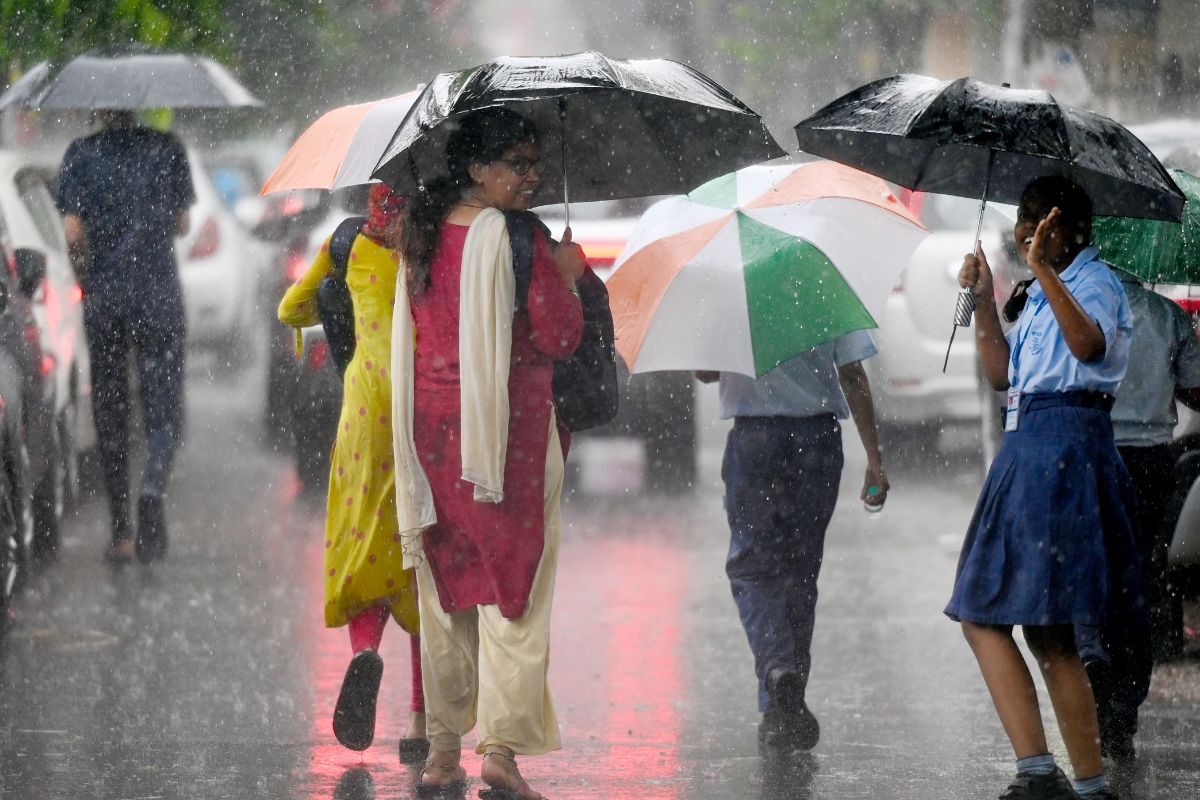The monsoon retreated from West Rajasthan on September 25 last year — eight days later than its normal date. In 2022, it was late by three days but a year before, it did not withdraw until October 6 — a delay of over three weeks
 Halfway through September, the monsoon has not shown any signs yet of retreating. Meteorologists are ‘almost certain’ that the persistent rains that began in June will continue over Northwest India till October — marking another year of an unusually long monsoon season for the region.
Halfway through September, the monsoon has not shown any signs yet of retreating. Meteorologists are ‘almost certain’ that the persistent rains that began in June will continue over Northwest India till October — marking another year of an unusually long monsoon season for the region.
“Certainly. The monsoon has been withdrawing later than usual over the years. The ‘normal dates’ have shifted. This time too, the current forecast suggests good rainfall activity over Rajasthan around the time when the withdrawal usually begins,” said IMD chief Dr M Mohapatra.
When the four-month season draws to an end, it has been observed that the monsoon has been taking 7-14 days more to withdraw from various states in North India. The season now lasts much longer than it did before 1940 — spelling trouble for farmers.
MORE UNSEASONAL RAINS
The ‘unseasonal rains’ in October not only threaten the standing crops in major states like Punjab, Haryana, and Uttar Pradesh, but they have also cut the harvesting season short, forcing farmers to adapt to a disturbed crop cycle.
“It is definitely concerning because farmers have to harvest the crops, and prepare for the next sowing season within a very short window. It also pushes them to resort to the harmful practice of stubble burning. This year too, it seems North India will continue to get rains till the first week of October,” said senior atmospheric scientist Dr M Rajeevan, who is also former government secretary, Ministry of Earth Sciences.
The low-pressure systems forming over Bay of Bengal in September keep infusing energy into a waning monsoon. Last year, the monsoon retreat began from West Rajasthan on September 25 — eight days later than its normal date of September 17. In 2022, it was late by three days (September 20), but a year before, it did not start withdrawing until October 6 — a delay of over three weeks.
By October 1, the harvesting for paddy begins, but some short-duration varieties are reaped as early as September. “There is still some time for paddy harvesting. But there could be some impact on crops like soybean, especially in Marathwada region, black gram and pulses which are harvested early. Farmers need continuous dry weather at this time,” said Kripan Ghosh, senior scientist heading the agri-met division of IMD.
BUT WHY IS IT HAPPENING?
The trend became more pronounced over the last decade, prompting the India Meteorological Department (IMD) to announce the ‘new normal’ for the monsoon season. So, while the onset dates over Kerala remained unchanged, the date for monsoon’s withdrawal from West Rajasthan (Bikaner, Jaisalmer) was revised from September 1 to September 17.
Interestingly, even though it spent more time over Northwest India, the monsoon still managed to finally leave South India by October 15 — in time for the arrival of the north-east monsoon.
The reasons behind these unusual delays have eluded scientists so far. According to them, it could be a part of a ‘multi-decadal natural variability’ — changes that the monsoon exhibits each decade.
“Or even climate change,” remarked senior IMD scientist Dr DS Pai. The world is already 1.1℃ degrees warmer than pre-industrial levels, which has increased the moisture-holding capacity of the atmosphere. The frequency of extreme rainfall events has shot up, and so has their intensity.
“It could also be due to the changing land-use/land cover patterns in the north-western region. A large part of the land used to be a desert, semi-arid earlier, especially Rajasthan. But now that area is under agriculture/plantation. So, there is more moisture available from the soil, which may have played a role in prolonging the monsoon season. It’s sort of a feedback mechanism,” Dr Pai added.
The four-month monsoon season is a lifeline for India’s agricultural economy, providing over 70 per cent of the annual rainfall from June to September. However, as the climate warms, it is becoming more erratic and throwing up newer mysteries.

